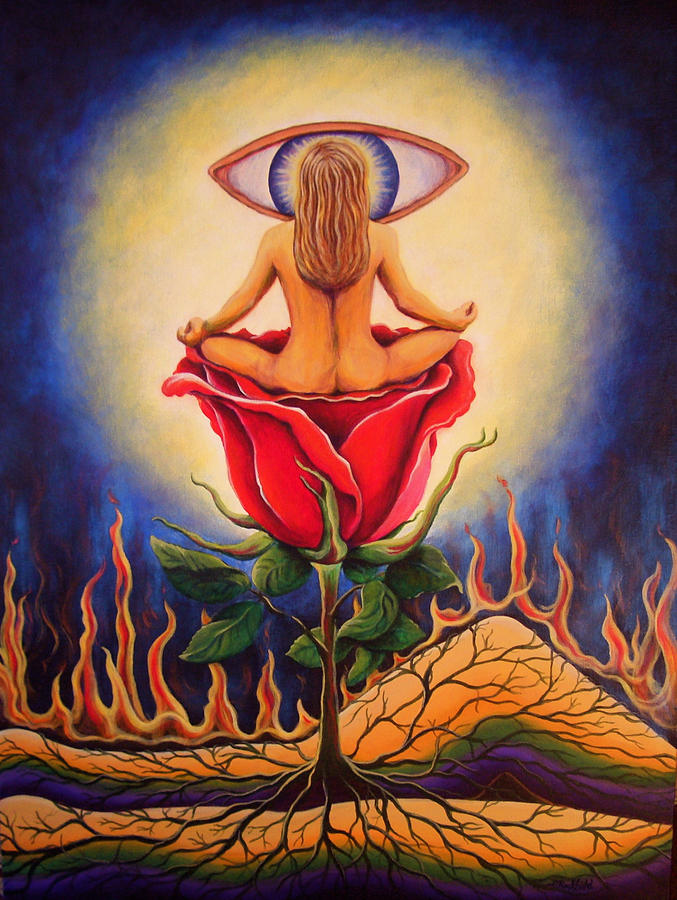Sweet Explosion
 Kundalini Rising -- Barbara Rockhold
Kundalini Rising -- Barbara Rockhold
Her veins are spiked with chlorella
aqua seafoam blue-green algae
with a drip of phytoplankton
pumping from the pores of velvet antler
Her eyes are carrot juice lasers
candy cucumber lids of alkaline salt
seeping in where the violet aura
surges with a fury of synchronistic flash
Her smile is a pearly white paradise
coated in celery crunch gene therapy
keeping calcification at bay
while smooth ships sail nearer to shore
Her tongue is laced in ghost pepper fetish
sweating out the lust of combustive flesh
sending shivers down the spine of kundalini
in white ignition pulse of pineapple explosion
 Kundalini Rising -- Barbara Rockhold
Kundalini Rising -- Barbara Rockhold
The Sanskrit "kuṇḍalin" means circular or annular and was used as a noun for "snake" (in the sense of "coiled") in the 12th-century Rajatarangini chronicle "The River of Kings," the earliest history of Kashmir, by Kalhana. In Hinduism it is a form of shakti (divine energy) located in the sacrum at the base of the spine, whiere it is "coiled like a snake." The term, along with practices associated with it, was adopted into Hatha ("force") yoga in the 15th century and is associated with the divine feminine. It is synonymous with "boghavati," which means both "enjoyment" and "coiled" and reltes to both mundane physical pleasure and the bliss of spiritual liberation (moksha, nirvana). It signifies Shiva's creative activity and sexual union with Kubjika ("the crooked one"), another name for Paradevi the supreme goddess. Comparative mythologist Joseph Campbell (whose philosophy was summarized by his motto, "Follow your bliss")referred to "the figure of a coiled female serpent -— a serpent goddess not of 'gross' but 'subtle' substance -— which is to be thought of as residing in a torpid, slumbering state in a subtle center, the first of the seven, near the base of the spine: the aim of the yoga then being to rouse this serpent, lift her head, and bring her up a subtle nerve or channel of the spine to the so-called 'thousand-petaled lotus' (Sahasrara) at the crown of the head.... She, rising from the lowest to the highest lotus center will pass through and wake the five between, and with each waking, the psychology and personality of the practitioner will be altogether and fundamentally transformed."
ReplyDelete